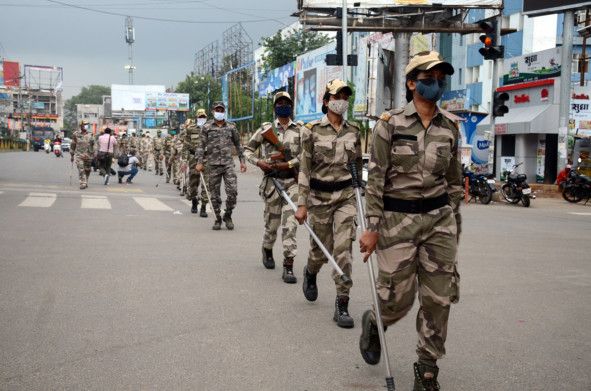
Patna: The genome sequencing of samples of COVID-19 patients in Jharkhand has shown the prevalence of highly contagious Delta variant, leaving the health officials extremely worried.
The Delta variant, first detected in India, is becoming the dominant variant globally because of its increased transmissibility, experts say. It’s this particular variant which had triggered a surge in the UK last year. UK Prime Minister Boris Johnson said on Monday that Delta variants were rising at a rate of about 30 per cent a week there.
According to Jharkhand health department officials, a total of 364 samples collected from five most affected districts of the state were sent for genome sequencing to the Institute of Life Sciences at Bhubaneswar in the southern Indian state of Odisha. These samples were collected from Jamshedpur, Ranchi, Dhanbad, Hazaribagh and Palamu districts in between April 1 and June 9 during the second wave.
A close analysis of the samples found that the Delta variants were present in 204 samples which make up for 56 per cent. Similarly, ‘Kappa’ variant, another variant detected in India, was found present in 63 samples, while 23 samples had the presence of the Alpha variant which was first detected in the UK. In the remaining samples, other variants were found.
Variants of concerns
The WHO has classified Delta and Alpha as the “variants of concerns”. While the Alpha variant spreads more rapidly, the Delta variant transmits rapidly.
“The Delta variant which is now a variant of concern was found to be the most prevalent in our state. However, the Delta plus variant was not found in any of the samples sent for genome sequencing,” nodal officer for Jharkhand health department Dr Siddharth Tripathi told the media on Tuesday.
The Covid task Force convener Prabhat Kumar has described it as a matter of grave concern. “The detection of such a large number of variants in Jharkhand highlights a very deadly situation. We will have to work hard to tackle the situation,” Kumar said.
The government said the period between April 29 and May 5 was the deadliest with as many as 951 people succumbing to the deadly COVID-19 while the state reported the highest infection between April 22 and April 28. The second wave hit the state in the last week of March and reached its peak in the last week of April.
COVID-19 has claimed more than 5,000 lives in mineral-rich Jharkhand state while also infecting over 3.44 million people so far. The state government is initiating a number of measures to tackle the possi-ble third wave in the state.
Jharkhand, a state with 31.9 million population, is the first state in India to formally prepare a manual of operation guidelines with the help of 14 clinical experts and health department officials to deal with the possible third wave. Setting its priority for the children in the third wave, the state is setting up 20-bed paediatric ICUs in every district, converting all malnutrition treatment centres into high dependency units to ram up infrastructure and arranging for oxygen facilities at every bed.








